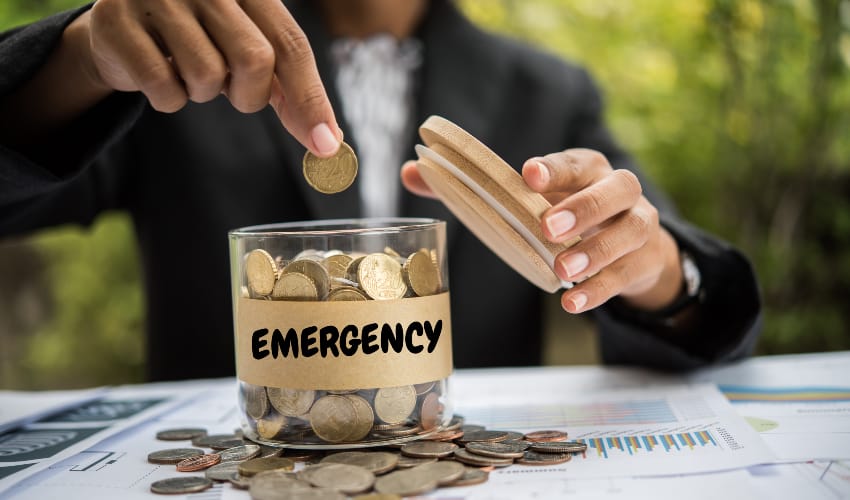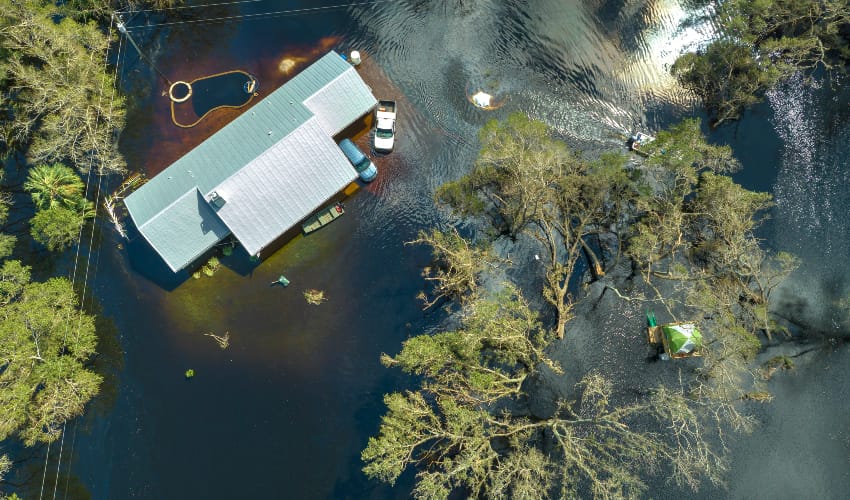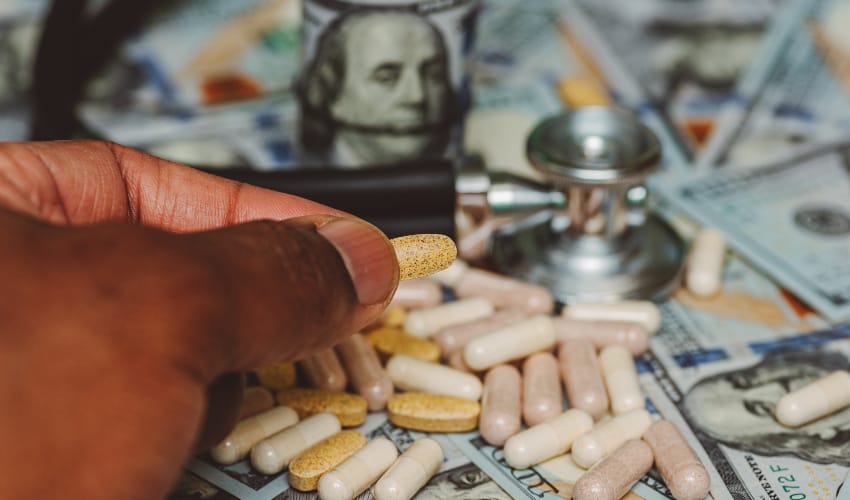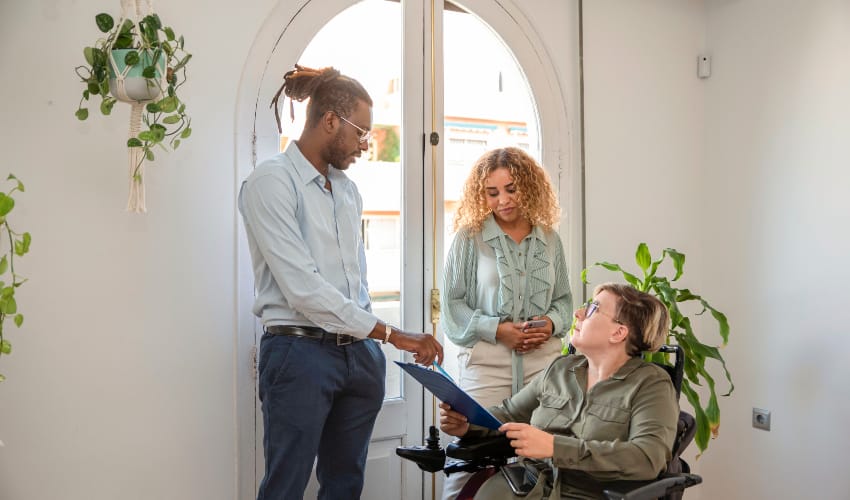
In Focus – SCCCU Blog
Stay informed about the Credit Union’s activities, plus get practical advice on a variety of personal finance topics.

Rainy Day Ready: The Real Number You Need in Savings
Emergencies don’t RSVP. They show up unannounced, usually at the worst possible time, and demand your attention and your money. Maybe it’s a broken water heater, a fender-bender, or an unexpected vet bill. Whatever the curveball, your best defense is a well-stocked emergency fund, or what we consider your "financial first responder."
What is an Emergency Fund?
An emergency fund is a pool of money you set aside specifically for life’s unexpected expenses. It’s your “just in case” money that keeps you from having to reach for a credit card (which means taking on debt), borrow from your retirement fund (or friends), or raid savings that have been earmarked for a well-earned vacation.
How Much Do I Need?
Maybe not as much as you think. You may have previously heard the advice that you need to save three to six months’ worth of essential living expenses. If you can get there, that's amazing! But newer research suggests that even six weeks of expenses can provide a strong safety net.
Here’s how to break it down:
- Set a goal to save $2,000. That’s a milestone that half of Americans haven’t yet hit. Reach it, and you’re already ahead.
- Don’t get overwhelmed. If saving six weeks’ worth of expenses feels like too much, start smaller: Try $10, $20, or $50 a week. The key is to begin. Set up an automatic transfer into a separate savings account so you don't have to make the decision to save every paycheck. You may not even notice the money’s gone.
- Save for essentials only. Your emergency fund should be sufficient to cover your rent or mortgage, utilities, groceries, insurance, and gas to get to work—not Netflix.
Your Best Emergency Fund Account Options
Once you’re building an emergency stash, you’ll want to keep it somewhere liquid, accessible, and safe. The top places to keep your emergency savings include:
- High-Yield Savings Account. These accounts are easy to open and typically offer solid interest rates. They’re also easily accessible, making them an ideal place to store emergency funds. Watch out for teaser rates that drop after a few months, or minimum balance requirements that can eat into your expected returns if you don't meet them. Always read the fine print before committing. Check out what SCCCU's accounts and rates here.
- Money Market Account (MMA). Money market accounts function similarly to high-yield savings accounts and often have highly competitive rates. However, many MMAs come with higher minimum balance requirements, and some limit the number of withdrawals you can make per month. If your balance drops too low, you may be penalized, so be sure to do your homework. Click here to see our FlexFund and Money Market accounts.
- Certificates of Deposit. Certificates of Deposit (or Share Certificates) can be a solid option if you’re looking for guaranteed returns over a set period of time, whether for six months, one year, or longer. Because your money is locked in for a term, Certificates often offer higher interest rates than savings accounts; however, the trade-off is liquidity. If you withdraw money before the Certificate matures, you’re “breaking” the Certificate, which typically results in a penalty of a few months' interest. One workaround is a Certificate ladder, where you open several Certificates with staggered maturity dates. Certificates are best suited for more established savers who already have six months or more of living expenses set aside elsewhere. Click here to see SCCCU's rates.
Must-Haves For Your Emergency Fund
Above all, your emergency fund should be:
- Somewhere safe: You want zero chance of losing this money. For that reason, your emergency fund does not belong in the stock market. It also does NOT belong in your checking account (where you’re likely not earning any interest), in a shoebox under the bed, or in the freezer hidden behind a bag of frozen peas. Stick to accounts that are NCUA-insured and low-risk, like high-yield savings accounts, money market accounts, or certificates of deposit.
- Accessible (but not too accessible): You should be able to get to your emergency fund quickly, but not so easily that you’re tempted to use it for everyday spending. Keeping it in a separate account can create helpful friction. That way, you won’t impulsively dip into it for non-emergencies.
- Earning some interest: While this isn’t an investment account, your money should still be working for you. Schedule a check-in with one of our Certified Financial Counselors at 831-425-7708 to review ways you can continue to earn as much as possible.
Your Next Steps
Think of your emergency fund as the financial equivalent of a seatbelt. You might not think about it much, but when you gotta slam the brakes, you’ll be glad it’s there. Start with what you can, and keep going until you’ve built a cushion you can sleep soundly on.
- CATEGORIES: Financial Education

Your Disaster Money Plan
 Read more about Your Disaster Money Plan
Read more about Your Disaster Money Plan
Cut Your Healthcare Costs Without Cutting Care
 Read more about Cut Your Healthcare Costs Without Cutting Care
Read more about Cut Your Healthcare Costs Without Cutting Care
What is Disability Insurance, and Do I Need It?
 Read more about What is Disability Insurance, and Do I Need It?
Read more about What is Disability Insurance, and Do I Need It?







 Business Solutions
Business Solutions